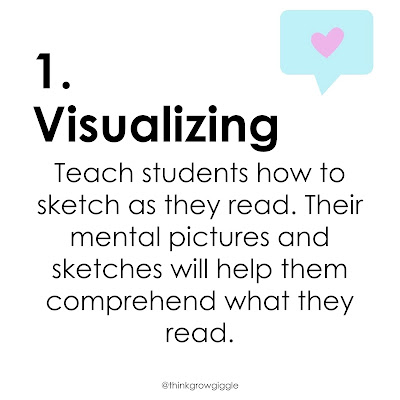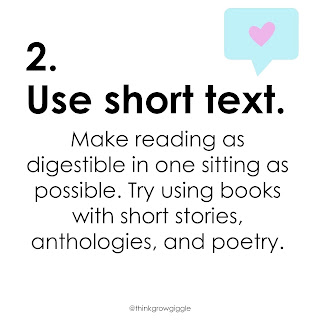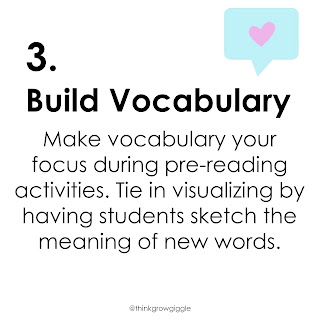Whether you have struggling readers or reluctant readers in your upper elementary classroom, these quick and easy-to-implement tips will help you to engage them and give them some strategies to build their comprehension toolkits.
When it comes to building readers, there are five components that help readers: phonemic awareness, phonics, fluency, vocabulary, and comprehension. The ideas I am sharing below will help you to strengthen the comprehension of not just struggling readers, but all readers!
Want to try this out? Grab the FREE visualizing activity!
When it comes to text length for struggling or reluctant readers, the shorter, the better! Using shorter texts helps students to feel like they accomplished a full reading activity in a short amount of time. When a text is too long, it is overwhelming for struggling readers. Using typed text is one way to use short text, but I like to use authentic reading material. That is why I use anthologies, poetry, and books of short stories.
Try these out to get started with short, authentic texts:
- Every Living Thing by Cynthia Rylant
- Kidstory: 50 Kids Who Changed the World by Tom Adams
- Where the Sidewalk Ends by Shel Silverstein
Build vocabulary by focusing on important words before reading. Previewing important words will help students' fluency and comprehension. You can even use important context clues strategies when the words come up during the reading. After reading, reinforce the words from the text with visualization sketches to really help students understand and use the new words, building their vocabulary.
This tip is a game-changer for struggling readers! Using previously read books makes a big impact on helping students grow as readers and to learn new reading strategies. When you use a book that you have previously read with your class for a new mini-lesson, students can focus on the new skill you are teaching instead of having to figure out and understand the book AND the new skill you are teaching. This tip truly helps alleviate stress and confusion in struggling readers who will feel overwhelmed with new books. Plus, this tip truly shows students that one book can be read many times, and each time they are read with a new lens!
When it comes to re-engaging struggling or reluctant readers, these tips will help! I have seen them work and ignite a love of reading in my own students, and I know that they will work for you and your students, too!
You will also love reading:
Check out my favorite reading strategy packs HERE.
Like these inferring activities:
LOVE these ideas? Pin to save!
affiliate links: “Think Grow Giggle is a participant in the Amazon Services LLC Associates Program, an affiliate advertising program designed to provide a means for sites to earn advertising fees by advertising and linking to Amazon.” (source: Section 5)




















